PFAS in Our Food and Everyday Life: The ‘Forever Chemicals’ We Can’t Ignore
I am not an expert on PFAS, but after days of research and comparison, I wanted to share my findings on this serious issue. Unlike my previous blogs, the depth and complexity of PFAS required a more detailed approach.
Understanding PFAS: What You Need to Know
PFAS—per- and polyfluoroalkyl substances (pronounced poly-floor-oh-alkyl)—are everywhere. These man-made chemicals  have been around for decades, used in nonstick cookware, waterproof fabrics, food packaging, firefighting foam, and even personal care products. Designed to resist heat, grease, and water, they don’t break down easily. That durability has earned them the nickname “forever chemicals.” But while they may be convenient in manufacturing, their persistence in the environment—and in our bodies—is raising serious concerns.
have been around for decades, used in nonstick cookware, waterproof fabrics, food packaging, firefighting foam, and even personal care products. Designed to resist heat, grease, and water, they don’t break down easily. That durability has earned them the nickname “forever chemicals.” But while they may be convenient in manufacturing, their persistence in the environment—and in our bodies—is raising serious concerns.
Are PFAS already in our food? The simple answer is yes. PFAS have made their way into the food chain, and avoiding them completely is nearly impossible. They enter our food supply in several ways:
-
Water and Soil Contamination: PFAS accumulate in groundwater and soil, where they can be absorbed by crops and livestock.
-
Seafood: Fish and shellfish from contaminated waters tend to accumulate PFAS in their tissues.
-
Dairy and Meat: Cows exposed to PFAS-contaminated water or feed can pass the chemicals into milk and meat products.
-
Produce: Vegetables and fruits grown in affected soil or irrigated with contaminated water can carry traces of PFAS.
-
Food Packaging: Many greas
 e-resistant wrappers, microwave popcorn bags, and fast-food containers contain PFAS, which can leach into food. Some supermarket butcher shops also use PFAS-treated butcher paper and meat trays.
e-resistant wrappers, microwave popcorn bags, and fast-food containers contain PFAS, which can leach into food. Some supermarket butcher shops also use PFAS-treated butcher paper and meat trays.
-
Studies indicate that PFAS have an extremely long half-life in the human body. For example, it can take years for just one nanogram of PFAS to be eliminated. This means that whether we’re drinking a glass of water, enjoying a seafood dinner, or eating a burger wrapped in a disposable package, we may unknowingly be consuming these chemicals and slowly accumulating them over time.
PFAS accumulate in the body faster than the body can eliminate them. Once ingested, they bind to proteins in the blood and settle in organs such as the liver and kidneys. Because the body's process of removing PFAS is so slow, repeated exposure leads to significant buildup. According to research, PFAS levels above 2 nanograms per milliliter (ng/mL) in blood serum have been linked to increased health risks, including immune suppression and hormonal disruption. Some studies suggest that even exposure as low as 1 ng/mL may have adverse effects over time. To put this into perspective, while trace amounts may be tolerated, cumulative exposure over time can lead to long-term harm. Similar to radiation, where small doses may not cause immediate harm but prolonged exposure can be dangerous, PFAS accumulation beyond a certain threshold significantly increases health risks.
Scientists have linked long-term PFAS exposure to various health concerns, including:
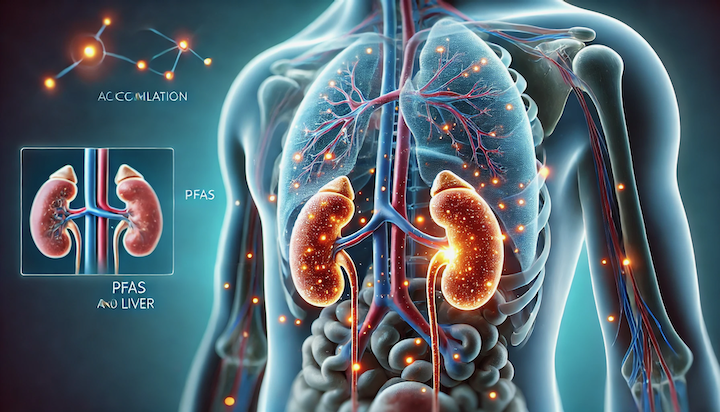
-
Immune System Effects: PFAS may weaken immune responses, making it harder for the body to fight infections and illnesses.
-
Hormonal Disruption: Some studies suggest PFAS interfere with thyroid function, which regulates metabolism and energy levels.
-
Increased Cholesterol: Research has found a correlation between PFAS exposure and elevated cholesterol levels, which may increase heart disease risk.
-
Cancer Risk: Some PFAS have been classified as possible human carcinogens, with studies linking them to kidney and testicular cancer.
-
Reproductive and Developmental Issues: Prenatal exposure has been associated with low birth weight and potential fertility challenges later in life.
Given these risks, it's natural to wonder: Can we remove PFAS from our food and water?
Unlike bacteria or pesticides, PFAS cannot be washed off produce or cooked out of food. Since they integrate into plant and animal tissues, their removal is nearly impossible once they’re in the food supply.
While McDonald's in the U.S. has pledged to phase out PFAS from pac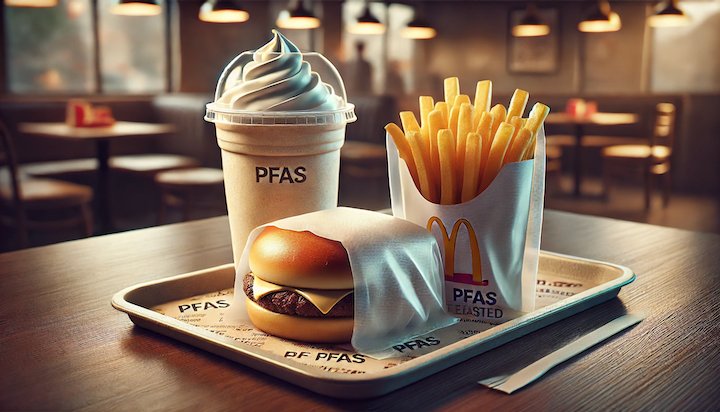 kaging by 2025, they have already complied with PFAS bans in countries where regulations require it, such as Denmark. Other companies have successfully eliminated PFAS from their packaging as of the date of publication, including Sweetgreen, Cava, and Chipotle, which have transitioned to PFAS-free food packaging. Additionally, companies such as McDonald's, Burger King, Starbucks, and Wendy’s have committed to phasing out PFAS globally by the end of 2025. However, some companies, particularly smaller or regional chains, have not yet made public commitments to eliminate PFAS from their packaging.
kaging by 2025, they have already complied with PFAS bans in countries where regulations require it, such as Denmark. Other companies have successfully eliminated PFAS from their packaging as of the date of publication, including Sweetgreen, Cava, and Chipotle, which have transitioned to PFAS-free food packaging. Additionally, companies such as McDonald's, Burger King, Starbucks, and Wendy’s have committed to phasing out PFAS globally by the end of 2025. However, some companies, particularly smaller or regional chains, have not yet made public commitments to eliminate PFAS from their packaging.
PFAS are also found in numerous everyday household items, each carrying different levels of exposure risk. Below is a ranking of their potential impact on a scale from 1 to 10, where 1 represents minimal exposure risk and 10 represents the highest risk of PFAS entering your body through direct contact, ingestion, or inhalation:
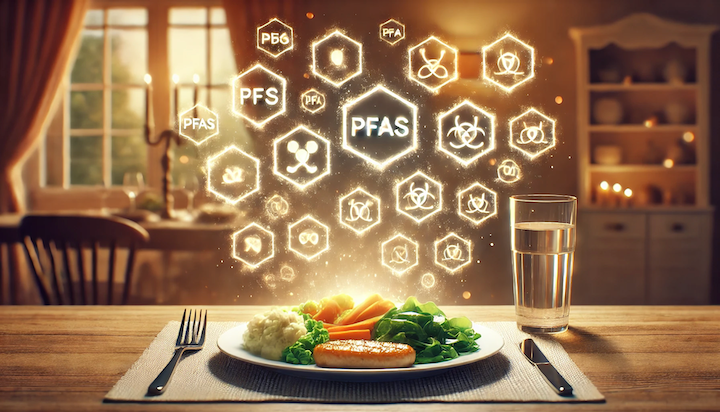
-
Nonstick cookware (Teflon/PTFE-coated pans) – 9/10 – PFAS can leach into food when overheated, especially if the pan is scratched or damaged.
-
Water-resistant fabrics (furniture, carpets, and clothing) – 7/10 – PFAS coatings shed over time, entering household dust and being inhaled or absorbed through skin contact.
-
Food packaging – 10/10 – One of the highest direct exposure risks, as grease-resistant wrappers and fast-food packaging allow PFAS to transfer into food.
-
Cosmetics – 8/10 – PFAS in waterproof mascaras, long-wear lipsticks, and foundations can be absorbed through the skin or ingested.
-
Dental floss – 9/10 – PFAS-coated floss directly enters the bloodstream through the gums, leading to significant exposure.
-
Cleaning products – 6/10 – Some stain-resistant sprays and wax-based cleaners release PFAS into the air or onto surfaces.
-
Waterproof mattresses and pads – 5/10 – Direct exposure is lower than other items, but prolonged contact over time may contribute to buildup.
-
Firefighting foam – 4/10 – A high-risk product for occupational exposure, but lower for household use unless directly handled or stored improperly.
-
Nonstick cookware (Teflon/PTFE-coated pans) – PFAS can leach into food when overheated.
-
Water-resistant fabrics (furniture, carpets, and clothing) – PFAS coatings shed over time and get into household dust.
While scientific efforts to reduce PFAS exposure continue, the bigger question remains: Can the earth ever be truly restored to its natural balance?
The issue of PFAS highlights a deeper reality—human efforts to control pollution and contamination have limitations. While scientists work on ways to clean up water supplies and reduce PFAS use, these chemicals remain a lasting reminder of how human industry can disrupt the balance of the earth.
However, Jehovah’s creation was designed to be self-sustaining. The intricate cycles of nature—including water purification, plant growth, and decay—were all part of a system meant to keep the earth thriving. Human interference has damaged these systems, but Jehovah has promised to restore the earth to its original purity. I saiah 35:7 speaks of water in desert places, symbolizing a complete renewal of the planet’s natural resources. Revelation 11:18 assures us that Jehovah will “bring to ruin those ruining the earth,” ending the pollution that threatens life today.
saiah 35:7 speaks of water in desert places, symbolizing a complete renewal of the planet’s natural resources. Revelation 11:18 assures us that Jehovah will “bring to ruin those ruining the earth,” ending the pollution that threatens life today.
While PFAS may seem like a permanent problem now, Jehovah’s purpose for the earth is unchanging. The time will come when no one will have to worry about contamination, toxins, or industrial waste. Until then, we do our best to stay informed, make wise choices, and look forward to the day when all of Jehovah’s creation will be clean once again.
What steps are you taking to reduce exposure to PFAS? Share your thoughts in the comments!
Scientific & Regulatory Sources on PFAS:
• U.S. Environmental Protection Agency (EPA), PFAS Strategic Roadmap, October 2021
• U.S. Food and Drug Administration (FDA), PFAS in Food Packaging, July 2023
• Centers for Disease Control and Prevention (CDC) & Agency for Toxic Substances and Disease Registry (ATSDR), Toxicological Profile for Perfluoroalkyls, May 2021
• International Agency for Research on Cancer (IARC), Evaluation of PFOA as a Possible Carcinogen, 2017
• Environmental Working Group (EWG), PFAS Contamination in U.S. Food and Water, 2023
• European Chemicals Agency (ECHA), PFAS Restriction Proposal, January 2023
• Denmark Ministry of Environment, PFAS Ban in Food Packaging, July 2020
• State of California, Department of Toxic Substances Control, PFAS in Consumer Products Report, February 2023
• Maine Department of Environmental Protection, PFAS Prohibition in Products, July 2021
• Environmental Science & Technology, Study on PFAS Exposure and Health Risks, March 2022
• Journal of Exposure Science & Environmental Epidemiology, PFAS Elimination Rates in Humans, June 2021
Corporate Commitments on PFAS Phase-Out:
• McDonald’s Corporation, Sustainability Report, March 2023
• Chipotle Mexican Grill, PFAS-Free Packaging Announcement, January 2022
• Sweetgreen, PFAS Removal Statement, December 2021
• Starbucks Corporation, Packaging Sustainability Plan, April 2023
• The Wendy’s Company, Corporate Social Responsibility Report, September 2023
• Burger King (Restaurant Brands International), Sustainability Report, November 2022
• Dunkin’ (Inspire Brands), PFAS Phase-Out Commitment, October 2022
• Trader Joe’s, PFAS-Free Packaging Initiative, July 2020
• Whole Foods Market, Sustainability and PFAS-Free Packaging Report, August 2021
• Cava, PFAS-Free Packaging Statement, June 2023
Biblical References (New World Translation Study Bible):
• Isaiah 35:7
• Revelation 11:18
Correction – February 2025
In the original version of this blog, I did not reference the February 2024 FDA announcement stating that manufacturers have stopped selling grease-proofing agents containing certain PFAS for U.S. food packaging. (FDA Press Release).
While this is an important step, it does not mean PFAS-containing packaging has been completely eliminated. Large companies such as McDonald’s and Chipotle have publicly committed to phasing out PFAS by the end of 2025, meaning some existing packaging with PFAS is still in circulation. Additionally, given the persistence of these chemicals in the environment, PFAS exposure remains an ongoing concern.
This correction is intended to ensure the most complete and accurate discussion of PFAS in food packaging.
Edited by dljbsp
- Blossom, hatcheckgirl, Roxessence and 1 other
-
 1
1
-
 2
2
-
 1
1

 e-resistant wrappers, microwave popcorn bags, and fast-food containers contain PFAS, which can leach into food. Some supermarket butcher shops also use PFAS-treated butcher paper and meat trays.
e-resistant wrappers, microwave popcorn bags, and fast-food containers contain PFAS, which can leach into food. Some supermarket butcher shops also use PFAS-treated butcher paper and meat trays.
.png.2359549101ce109aac1dd121e540393d.png)



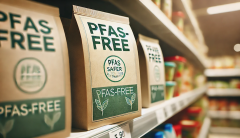

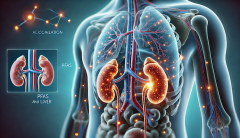







5 Comments
Recommended Comments
Join the conversation with your brothers and sisters!
You are posting as a guest. If you are already a member, sign in now to post with your existing account.
Note: Your post will require moderator approval before it will be visible.